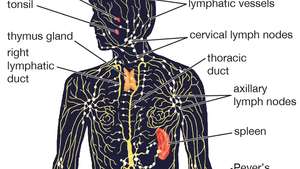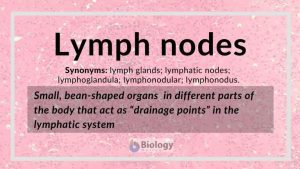When The Lymph System Gets Limp…And How You Can Support It
Coach K recently attended a (virtual) seminar entitled The Lymphatic Rescue Summit put on by HealthMeans.com. This blog is a compilation of what she learned about supporting a “limp” lymph.
What Is The Lymphatic System?
 The lymph-system encompasses much more than just your tonsils. Vital organs and other sub-systems are involved. Learn to recognize and support a “limp” lymph-system.
The lymph-system encompasses much more than just your tonsils. Vital organs and other sub-systems are involved. Learn to recognize and support a “limp” lymph-system.
The lymphatic system is made up of:
- Vessels
- Ducts
- Nodes
- Spleen
- Thymus
- Adenoids
- Tonsils (Tonsils removed? The infection will look another place to land)
All these organs & glands work in conjunction with liver, kidneys. Here’s a short video explaining the lymph system.
Lymph is primarily a watery fluid with lymphocytes in it and is a reflection of your overall health. We have 3 times as much lymph fluid than we do blood. B and T cells are also important. T cells mature in the thymus and kill any foreign invaders. B cells are mature cells in the bone marrow. These produce antibodies that are used to attack invading bacteria.
 Lymph Nodes
Lymph Nodes
There are hundreds of lymph nodes in the body. These are the filtering stations.
- Spleen, on the left side above the kidney, is the largest lymphatic organ. It’s the main immune defense gland and holds a reserve of red and white blood cells destroying and replacing the worn out red blood cells in the body.
- The thymus is above the Adams apple and stores white blood cells.
- Adenoids and tonsils get infected when they become inflamed.
Throw Out The Waste
The lymphatic system is your toxic waste dump. The lymph is in charge of the toxic dump for foods, for emotions, for metals, etc. It’s like changing the oil on a car. However, we’re really changing the oil in our body.
This expansive system moves throughout the body through every cell to remove toxins and waste. It also helps to absorb fats and fat soluble vitamins and delivers them to the cells in the body. It’s an essential part of the immune system. Without it, we would die. It produces white blood cells and its primary goal is to transport lymph.
The Role Of Fascia
The lymphatic system is about letting go of emotions and toxins. And the fascia is the emotional house. It’s where the body houses the traumas and dramas. Trauma and toxins can get stuck in the lymph and the fascia. We have superficial fascia and we have deep fascia. It goes around every organ, every tissue, every joint and it’s what houses the lymphatic system. If that gets stagnant, has lots of knots or has scarring in the fascia then it will limit the lymph from flowing. Signs of lymphatic stagnation include:
- Overweight & Cellulite
- Aches and pains
- Autoimmune disease
- Puffy eyes, Swelling in the hands or feet or Abdominal bloating
- Lipomas
- Vertigo
- Constipation (Ideally, we need to poop 1-3 times per day.)
- Acne, Dry Skin or Rashes
- Sore breast tissue
- Spine/shoulder stiffness
- Brain fog, Chronic Headaches or Increased Sickness
- Food sensitivities, especially if they get worse or expand to other foods
- Unusually puffy armpits. If your armpit is flat or puffed out then this is a sign of toxic build up in the body and lymphatic stagnancy.
How Does The Lymph System Get “Limp”?
- Sedentary lifestyle
- Tight fitted clothing
- Wi-Fi being on all the time
- Certain foods thicken the lymph like dairy, bananas, and raw onions.
- Dehydration
In addition, the mouth holds much lymph fluid. So, the jaw, our sinuses and even our teeth are connected to the lymph system. Lymph moves through our sinuses and jaw to our sternum to drain. All the lymph from our face drains down as well.
“7 out of 10 degenerative diseases start in the mouth” – per the CDC.
*Toxins get stored in fat cells. This creates water retention and stagnates weight loss.
**We need to be able to sweat! Drainage is key! If we struggle to sweat we need to be concerned about stagnation.
Risks of lymphatic stagnation:
- Lymphatic congestion leads to inflammation and making lymph nodes swell.
- Leads to infection
- Constipation can cause back flow of toxins.
If your toxins are not coming out faster than they’re coming in then the build-up is going to overflow. Everyone has a different size “rain bucket”. The bucket fills with toxins but genetics and lifestyle also affect the size of the bucket. However, the whole time the bucket is filling up, there are no symptoms. When the bucket overflows, symptom(s) appear.
Lymphatic stagnation leads to Chronic Fatigue and Fibromyalgia, diseases characterized by a deficient lymphatic system. A stagnant lymphatic system equals a struggle to lose weight, water retention and so on.
Supporting A “Limp” Lymph-System
Heal the body. However, the body will not heal unless it’s in a parasympathetic state. The physical toxins can move through the body somewhat with movement or exercise, but the emotional toxic load will not budge unless the body is in a parasympathetic state.
Healing happens through:
- Nutrition. A modified Mediterranean diet that is low carb and eliminates gluten and gluten free products and animal products. Avoid Gluten Free because those are still bready – even tapioca starch. Gluten Free products are processed and clog lymph. Avoid beer, liquor and mixed drinks. However, red wine is okay. Avoid Salt as it promotes fluid retention.
- Sleep. Not enough sleep causes chronic circulatory inflammation, clogging the lymph system. There’s also higher plaque build ups, and a higher likelihood of cardiovascular disease and weakens immune system.
- Stress. Increased stress compromises the lymphatic system causing it to stagnate. Stress also weakens the immune system. Stress releases Cortisol, a hormone that results in Metabolic acidosis. Acidosis is extremely inflammatory and blocks lymphatic drainage . Cortisol causes a breakdown of lymphatic tissue and can reduce the circulation. It induces signaling from the sympathetic nervous system which can also lead to cancer progression
- Lifestyle. Lymph is part of the circulatory system. The skeletal muscle is what actually moves the lymph. When we move our lymph moves but our emotions move, too. Notice how much better you feel after a walk.
- Shock. Hot or cold showers are a great way to kick start your lymph system.
- Hydration. Hydration is key to getting the toxins moving out of us. Our lymphatic system is mainly water. Without enough water, the system gets sluggish and stagnates. Drink at least 1/2 your body weight in ounces so it can do work for you. Spring water is great. you can also sprinkle sea salt in your water to make it more active on an ionic level so the cells will take in the water better. Sodium and potassium are the main things that you need when you’re doing lymphatic work.
Electrolytes are great. Electrolytes are primarily made through sodium, potassium, magnesium, and calcium. Great electrolytes additives to use are: Matrix, Bodybio, OR the cheap and best route is just a pinch of Himalayan Sea Salt in your water.
Other Ways To Support A “Limp” Lymph Include:
- DEEP Breathe every day! Deep breathing allows the lymphatic system to pump the bad stuff to the exit. Shallow breathing creates lymphatic congestion. Breathing is one of the best facilitators to move lymph fluid. It oxygenates the blood too. Try it for 5-10 minutes per day.
- Don’t wear tight fitting clothes. Go with natural fibers. Synthetic clothing contains chemicals toxic to the system.
- Clean skin care!
- Fruits and veggies make the body happy! Dairy, highly processed meat, and grain are acidic. The more acid, the more toxic the body. Fruit & vegetables are the alkaline.
- Yoga and stretching are great ways to get the lymph moving.
- Infrared saunas.
- Bouncing up and down can really get lymph moving. Vibration Platforms also work. Even tickling your neck. This helps your shoulders create arrector pili, or Goosebumps, which can get stuff circulating.
- Acupuncture
- Roller ball therapy
Dry Brushing
Another way to support the lymph system is through Dry Brushing. This video will explain more.
 How to manually pump/drybrush:
How to manually pump/drybrush:
- Gently perform circular massage just under the clavicle bones. Always pump towards the heart because the heart is what’s going to eventually pump it out . The lymph drains into the heart.
- Then pump the tonsils. The tonsils will then pump that out into the heart. Now everything is open.
Pumping or dry brushing helps to unplug the lymph by creating a little ‘hole in the dam’. We don’t want to flood the body all at once but instead open up the fascia around the lymph nodes. Lymph moves through the vessels to be pushed out.
Lymph only moves in one direction. Your lymph ends on top of your clavicles, the “termini”. So lymph is pushed into our heart. Then the heart pumps it through the lungs. As a result, we breathe out more toxins along with regular bowel movements, sweat & menstrual cycles. However, if you don’t sweat properly, pee too much too much or don’t have regular bowel movements your lymph may be clogged.
Stimulate a limp lymph system in this order:
The major upper body lymph vessels first:
- at the clavicles
- on the tonsils
- neck
- on the armpits
- elbows
- wrist
The major lower body lymph vessels next:
- Your cisternae, between the belly button and the sternum
- Your hip flexors, the inguinals
- Behind your knees
- At your ankles, between the ankle bones and the Achilles
****Make sure you go back to the termini to assure the gate is open.
Lymphatic Drainage Videos:
Healthy people can get away with just dry brushing/manually pumping. But most people have been stuck for years. So the system needs to be unblocked and worked more. As a result, we need to do a little bit more.
Supplements To Support A “Limp” Lymph System
- Echinacea
- Melatonin, which is immune modulating not immune enhancing
- Nettle – an anti allergy and anti inflammatory herb that lowers BP
- Immunoglobulins – SBI
- Low Dose Naltrexone – prescription only, but homeopathic. LDN produces opioids in the brain and affects our nervous system! Great for folks with fibromyalgia.
In Closing:
Learning to support a “limp” lymph-system isn’t difficult, but may take some time. Do your body a favor and see if a change in your nutrition, self-care routine, sleep patterns or other things suggested here and in the links can help you. Get to know your lymph-system. Your body will thank you for it!

